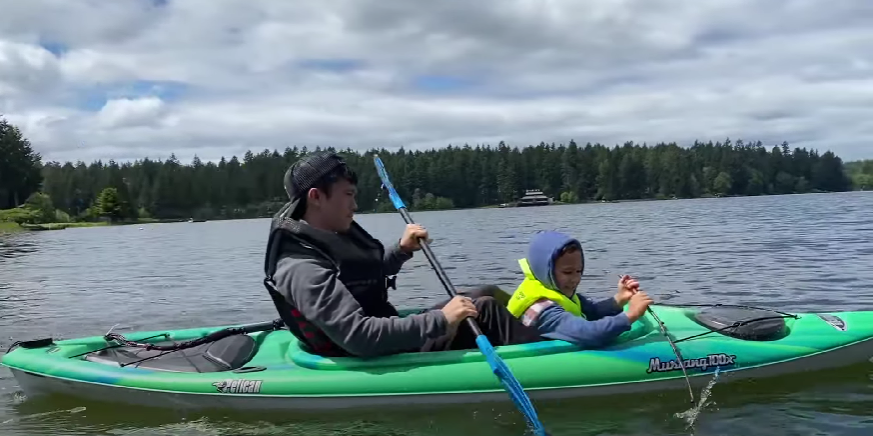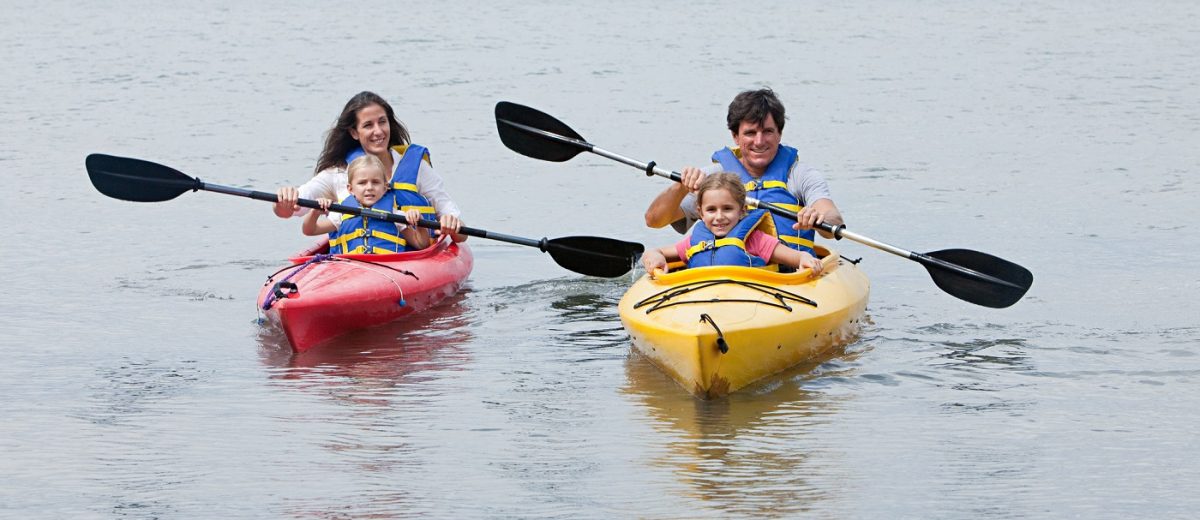
- Alabama
- Alaska
- Arizona
- Arkansas
- California
- Colorado
- Connecticut
- Delaware
- Florida
- Georgia
- Hawaii
- Idaho
- Illinois
- Indiana
- Iowa
- Kansas
- Kentucky
- Louisiana
- Maine
- Maryland
- Massachusetts
- Michigan
- Minnesota
- Mississippi
- Missouri
- Montana
- Nebraska
- Nevada
- New Hampshire
- New Jersey
- New Mexico
- New York
- North Carolina
- North Dakota
- Ohio
- Oklahoma
- Oregon
- Pennsylvania
- Rhode Island
- South Carolina
- South Dakota
- Tennessee
- Texas
- Utah
- Vermont
- Virginia
- Washington
- West Virginia
- Wisconsin
- Wyoming
Toddler Canoeing: A Great Way to Make Memories
Canoeing with Toddlers
Canoeing with your children can be a fun family bonding activity, regardless of whether you already enjoy the sport. Getting out in nature is a great way to spend time together. As you may expect, paddling with kids is more involved than paddling with your friends or going for a solo paddle. Having patience and more planning will pay off in the long run.
How To Start
Try paddling without your children when you go canoeing for the first time. If you plan a family canoe trip, you should have some experience.
In addition, you can hire a guiding company specializing in canoe trips for novice paddlers. They will usually provide the equipment you need for the journey, and their guides will handle any problems.
If you plan your first family canoe trip, whether on your own or with a guiding company, consider the following tips. The more in advance you plan, the more fun the trip will be. The last thing you want is to be surprised when you go on a trip. Be prepared and make some great memories with your family!
These Ten Tips Will Help Your Family Have An Enjoyable Canoe Trip
You should consider the trip in terms of safety and fun when you take your kids canoeing for the first time. When canoeing with kids, the primary concern should always be safety, but you also want specific plans to make the first paddle trip as stress-free as possible. Get the suitable kids kayak or kids canoe, but Safety concerns are listed first, followed by advice for a low-stress trip.
Make Sure Your PFD Fits Well
It would be best to consider a few things when choosing a PFD for your child. The main factor to consider is the child's weight. There are three categories of PFDs for children:
- 8-30 lbs: Infants
- 30-50 lbs: Child
- 90+ lbs: Youth
PFDs for youth look very similar to adult PFDs, just slightly smaller. In many child-sized PFDs, there is an additional strap around the crotch area to ensure that the PFD stays on if the child falls in. Most infant PFDs have head support, a handle, and a crotch strap.
PFDs for children and youth are primarily Class III flotation devices. Infants can be classified as either Class III or II.
Prepare To Respond
Accordingly, by bringing a first aid kit that matches your level of training. Bandaids are a must-have and anything else you or your kids might need (inhalers, epi-pens, etc.). Guides are likely to bring a first aid kit with them. If you don't want to bring your own, check with them beforehand.
Take a Wilderness First Aid or Wilderness First Responder class if you intend to do a lot of outdoor adventures with your child.
Beware Of The Sun
Make sure your child is protected from the sun, no matter the weather. Water glare can cause an unexpected sunburn, even on overcast days. Wear sunblock and sun-protective clothing when your child is outdoors. Children should wear long-sleeved shirts with SPF. A baggy-brimmed sun hat will be a good choice if they wear a hat.
Spray sunblock is easy to pack and works well for kids. You could also buy your child zinc oxide for their nose, cheeks, and ears if they are prone to sunburn. Most kids seem to enjoy the colors (similar to face paint). Waterproof and UVB and UVA protection are also included.
Stay Hydrated!
Bring plenty of water along with you on your first trip in a canoe with your child if it's a hot day. Dehydration is no fun for anyone, and if left untreated, dehydration can lead to headaches, fatigue, nausea, and even be dangerous. Staying hydrated isn't tricky, and you need to drink water!
Many kids don't drink enough water. Keeping your kid hydrated will be more difficult if they drink a lot of sodas and sweet drinks.
Drinking water tends to be unappealing to kids who drink a lot of sweet drinks. During the paddle, you can provide something like Pedialyte for them to drink. The drink has a sweet taste, but it is packed with electrolytes that help keep you hydrated.
Make A Bundle!
Bring a few extra layers to help keep your child warm if the first canoe trip is on a chilly day.
When kids have fun, they are notorious for saying they aren't cold. After a while, and as they get tired, they are likely to feel a little chilly. If your children get cold during the trip, pack extra warm layers in a dry bag.
Make sure not to wear anything you don't want to get dirty. You and your child will wear these outfits on the trip. You should not bring canoeing if you don't want it to get dirty.
Make Sure Your Kid Doesn't Get Hungry
Cranky kids are hungry kids. Bring extra snacks for the trip, just if your kid gets hungry.
Especially if you're not experienced with canoeing or paddling in an unfamiliar area, canoe trips can take longer than expected, so make sure you have enough food on hand.
Unless you'll be able to pull onto shore to eat, try not to schedule your trip during your child's typical mealtime. It can be a lot of fun to plan a picnic on a known sandbar, and it can add an element of adventure to the trip. However, you shouldn't count on finding a great lunch spot in the area if you're unfamiliar with it. Avoid going out during mealtime if you're canoeing in a new place.
Leave Valuables On The Canoe
Clip a dry bag to your canoe's thwart to keep your valuables (keys, cell phone, etc.). Be prepared to fall in a while paddling with your child, even if you've never lost while paddling alone. Your canoe may flip if your kids act irrationally, especially in new situations. If you capsize, you must ensure your valuables remain dry and won't float away.
Keep A Towel And Clothing In Your Car To Keep Your Valuables From Getting Wet
Leave dry clothes and towels in the car for yourself and your child. It's unpleasant to drive home wet after falling in the water. In addition to packing the dry clothes in a plastic bag, you can also use the same plastic bag to keep the wet clothes from making puddles in the car.
Is The Water So Heavy?
It will take your little one longer than you think to get tired during your first family canoe trip. Kids typically enjoy canoeing because it looks fun, and they've seen it on TV or in movies. It's more difficult to canoe than in film, and TV shows seem like kids don't realize that. Having to paddle in heavy water is a shock to them.
During your first family canoe trip, don't plan to stay on the water for very long. Prepare to take a lot of breaks and do most of the paddling yourself. Think of some fun road-trip games you can play during the breaks to keep the mood upbeat. To keep things moving, set a time limit when you take breaks.
The Crew, Not The Cargo
Let your child have some responsibility. They are more likely to buy into the trip and remember it better if they feel like a valuable member of the team. Please do not make them feel like mere spectators.
Give them specific safety instructions before you board the canoe. Also, assign them a role based on their age and ability.
For example:
- Give them responsibility for a particular piece of equipment.
- Have them assist with loading and unloading gear.
- They should be called "Hydration Monitors" and remind everyone to drink water.
- Their responsibility should be to keep the canoe centered.
- Ask them to locate specific landmarks.
- Allow them to save time during the breaks using a watch.
Last Thought About Canoeing With Kids
You may need to adjust some of these tips based on your child's age and ability level. Adapt your planning to your family's needs based on your situation. For a low-stress, fun-filled experience, plan when taking your kid canoeing for the first time.











